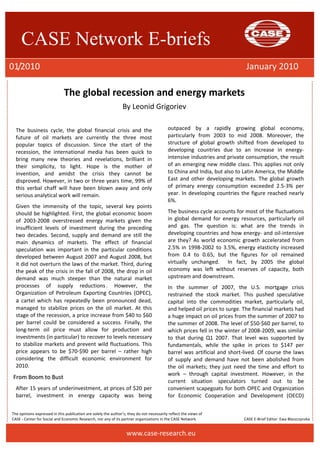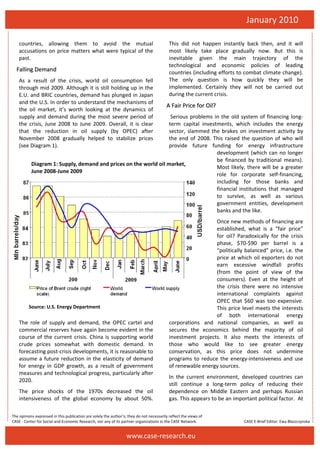This document discusses the impact of the global recession on energy markets. It makes three key points:
1) The 2003-2008 global economic boom overstressed energy markets due to insufficient investment in the prior decades.
2) While financial speculation influenced oil prices from 2007-2008, supply and demand remain the main market dynamics.
3) OPEC has managed to stabilize oil prices during the recession, with the current $60 per barrel price considered a success.



